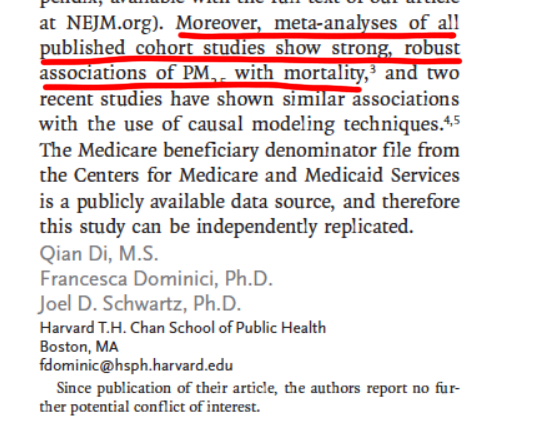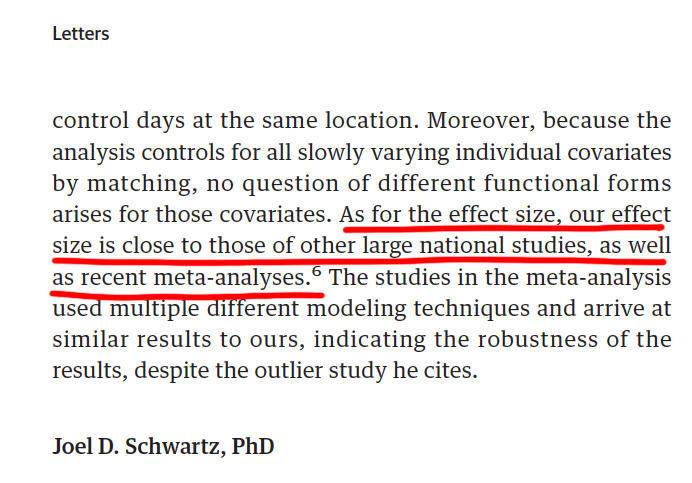The letters are finally published for last December’s junk science-powered PM2.5 study in the Journal of the American Medical Association. We made huge progress.

The good news is that the controversy and pressure we generated earlier this year resulted in JAMA publishing letters from JunkScience.com friends Fred Lipfert, Tony Cox and Stan Young.
The better news is that Harvard’s Joel Schwartz seems to have dropped (or was made to drop) his scurrilous defense of the study.
Readers will recall that in October 2017, Schwartz tried defending his NEJM PM2.5 study by claiming the reported PM2.5 associations were “strong” and “robust.”

But now the associations are no longer “strong” and “robust” — they are merely “close to” the size of previously reported associations (which Schwartz takes to imply “robustness”).

I don’t know for sure… but I speculate that because of the stink we made earlier this year, JAMA would not allow Schwartz to lie again and claim that his weak associations were “strong.” But JAMA would allow him to say they were consistent and robust.
This alleged consistency/robustness is another reason the data underlying these studies must be made available for independent review.
Because Schwartz’s associations are weak and therefore meaningless, his mainline defense now is that these black box results are consistent with other black box results — the main defense here being the black box.
As Stan Young recently showed, the black box models employed make it easy for researchers to tweak their results so as produce the desired consistency/robustness.
The PM2.5 epidemiology continues to be the biggest ongoing fraud in regulatory science. This is why Schwartz et al. are determined to keep their data and methodologies secret.
